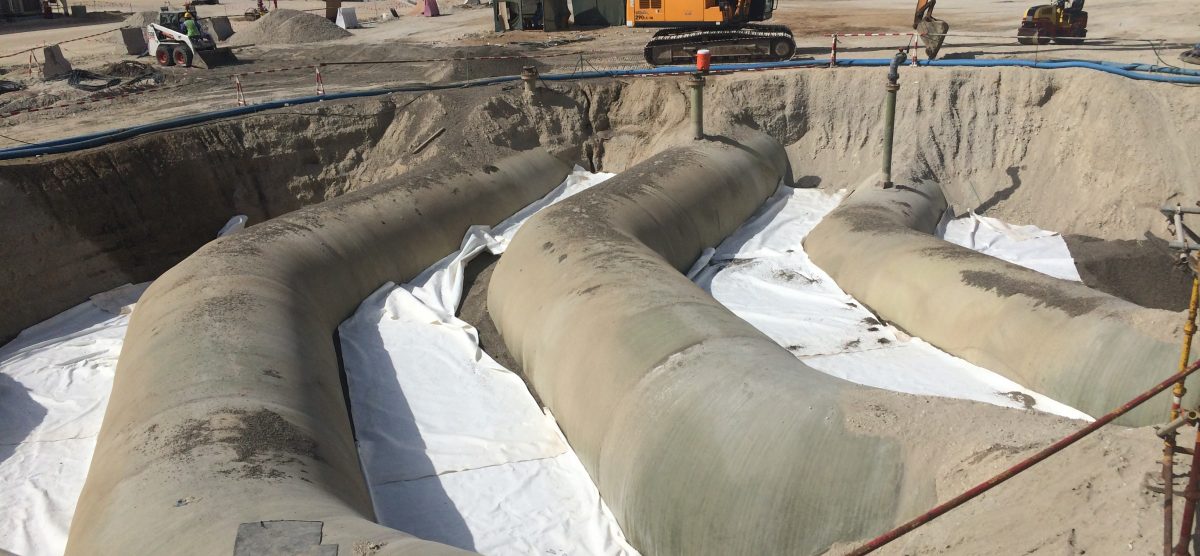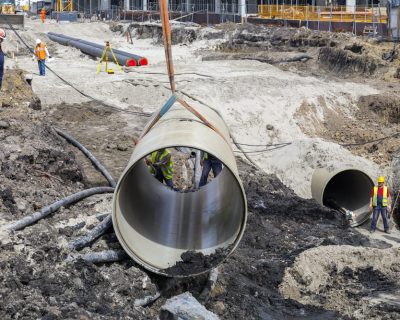Blog

FRP Piping : An overview
FRP is the abbreviation for Fiber Reinforced Plastic. The composite raw material consists of a fiber-reinforced polymer matrix. Depending on the desired final properties of the end product, manufacturers use various resins in the composition. FRP piping systems are globally popular as it eliminates the need for cathodic protection, external coating, and internal lining.
What are the properties?
- FRP pipes are of low weight
- FRP pipes are resistant to temperature, resistance, and corrosion
- FRP pipes are robust
- Easy installation
- Maintenance-free/Low maintenance
- The smooth outer surface (this demands less jacking pressure)
- Non-Toxic
- Better service life
- Hydraulic efficiency
Manufacturing process : FRP pipe
FRP pipes are manufactured by the filament winding method or contact molding method. The filament winding method winds glass strands infused with polyester resins on a rotating mandrel with the help of a special winding machine at specified winding angles.
The contact molding method utilizes rigid molds for manufacturing FRP pipes. The thickness of the pipe depends on the number of composite layers deposited within the mold.
FRP piping system is available in a wide range of sizes that range between 1 inch to 144 inches.
FRP pipes – Application
FRP piping system finds application in various industries due to its physical and chemical properties. Some of the areas of application of FRP pipes are,
- Potable and raw water supply
Due to the non-toxic properties and resistance against turbidity, presence of heavy metals, and migration of chemicals, FRP pipes perform better than the conventional alternatives in the potable and raw water supply industries.
- Chemical and fertilizer plants
The chemical resistance, high mechanical strength, and significant resistance to temperature upgrade the FRP Piping system to the best choice in the chemical and fertilizer industry.
Some other industries that rely on FRP pipes for best functioning are, Desalination plant
- Refinery
- Petrochemical and petroleum plant
- Offshore oil production units
- Effluent and sewage water supply units, and many more!


